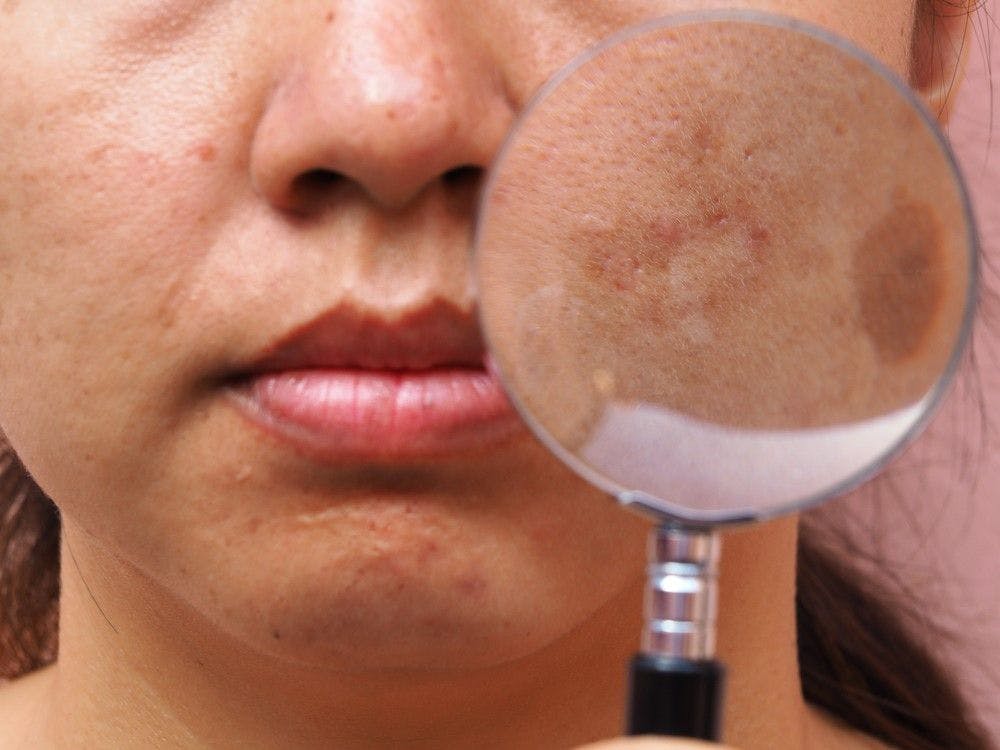- Acne
- Actinic Keratosis
- Aesthetics
- Alopecia
- Atopic Dermatitis
- Buy-and-Bill
- COVID-19
- Case-Based Roundtable
- Chronic Hand Eczema
- Chronic Spontaneous Urticaria
- Drug Watch
- Eczema
- General Dermatology
- Hidradenitis Suppurativa
- Melasma
- NP and PA
- Pediatric Dermatology
- Pigmentary Disorders
- Practice Management
- Precision Medicine and Biologics
- Prurigo Nodularis
- Psoriasis
- Psoriatic Arthritis
- Rare Disease
- Rosacea
- Skin Cancer
- Vitiligo
- Wound Care
Publication
Article
Dermatology Times
Skin of Color Seminar Series roundup
Author(s):
A panel discussion on the increasing trend of total body skin lightening ― and ethical and health concerns associated with skin lightening ― was this year's most discussesd and controversial topic.
Eliot F. Battle, Jr., M.D>

The most discussed topic and most controversial session (in a good way) at this year’s Skin of Color Seminar Series in New York City was the panel discussion on the increasing trend of total body skin lightening and the ethical and health concerns that shadow it.
I started the panel discussion by outlining the medical and ethical concerns facing dermatologists regarding patients who are seeking treatments for total body lightening. I was followed by comments and a slide presentation from Dr. Valerie Callender, some practical advice by Dr. Seemal Desai â who is considered one of the leading experts on skin pigmentation, and the conference’s co-founder and skin of color expert, Dr. Andrew Alexis who shared pearls of wisdom on the subject.
The fact is that centuries after colonization and centuries after the Hindu system caste system, many patients still seek to lighten their skin based on perceptions that beauty and social status is influenced by their skin color.
All through Asia, India, Africa and now America, we are seeing people trying to total-body lighten their skin. The treatments range from topical bleaching agents and oral, intramuscular and intravenous injections. We see actors and actresses in Bollywood and Hollywood, and from all across the globe who are noticeably lighter than they used to be.
Glutathione, an antioxidant that we have used for years for a multitude of reasons, is now being used worldwide in the oral, intramuscular and intravenous form to lighten the skin. There are no FDA studies or published organized studies looking at its safety, but reported side effects include thyroid dysfunction, kidney damage, liver diseases, skin rashes and even death. The FDA has published a position statement saying there is no injectable product approved for skin lightening, but the practice still goes on.
The panel discussed how medical professionals should approach this issue and came to the conclusion that regardless of the ingrained racism that we feel is the backbone of this trend to lighten the skin, we need to get behind this with research and studies to determine the true safety of oral, intramuscular and Intravenous glutathione injections. It’s the same as in the war on drugs: people still do it even after we shout, “Don’t do this! It is bad for you.” As experts of the skin, knowing that our patients are going to probably do it with or without our consent, we need to thoroughly investigate its safety and consider doing research and clinical studies to see if we can come up with safe protocols looking at the safety of oral, muscular and intravenous glutathione.
It is easy to look at this topic through a moral compass, but since most of us don’t negatively judge patients who change hair and eye color or change their facial and body structures with plastic surgery, then perhaps we should stop judging patients who choose to change their skin color. Minimally we need to help them find a safe treatment protocol if they choose to venture down this road. You can understand why this topic is so controversial and worthy of further discussion, research and studies.
In the meantime, the general consensus is that for the patients who are insisting on going down that path, we could recommend a short course of oral glutathione until there is more information on the use of intramuscular and intravenous injections. But even that option is worthy of additional debate.
This year’s Skin of Color Seminar Series (SOCSS) was by far one of the best conferences we have had in the 10 years. It included a sold-out audience of around 250 doctors, nurses, physicians assistants and aestheticians. The exhibit hall was also sold out, turning away companies that applied too late to get a spot in the exhibit hall or who wanted to conduct a device demo or workshop.
The 2019 rebranding of the seminars to “Skin of Color Update” was revealed at the meeting and was well received, along with moving the seminar from May to September.
There was a great mix of brand new attendees and presenters as well as attendees who have supported the seminars over the past decade. As usual, the faculty dinner which was attended by most of the expert faculty and exhibitors did not disappoint. The environment was a great venue to discuss mutual research interest between KOL (Key Opinion Leaders) and industry decision makers.
In terms of the scientific program, there were many highlights. Dr Maritza Perez presented some amazing research looking clinically, genetically and molecularly at the variations of aging, between different ethnic origins and skin color types. Many of us appreciated the variations in aging amongst different ethnic origins but I was very glad to see the science behind our observations.
Dr Valerie Callender gave an amazing and thorough presentation on “Understanding Hair Loss in Skin of Color,” followed by presenting an “Update on Medical and Surgical Treatment Options” for hair loss. She reviewed how certain hair styles, frequent chemical processing and innate genetic factors cause those with skin of color to be particularly susceptible to some forms of alopecia and hair disorders. This was followed by Dr. Wendy Roberts presenting “Hair Growth Treatments Update" reviewing topical treatments, oral supplements, laser and PRP injections. The hour that Dr. Callender and Dr. Roberts presented was one of the most comprehensive coverages of diagnosis and treatment options of hair disorders in patients with skin of color that the audience had seen.
Dr. Roberts demonstrated the Aerolase laser and discussed the many types of treatments that it performs. Dr. Jeremy Brauer gave a demonstration on Solta’s new-generation Thermage FLK RF device for skin tightening and I reviewed the new Lumenis Piqo4 Q-Switched nanosecond and picosecond laser for both skin rejuvenation, pigment improving treatments and tattoo removal. All three device demonstrations were well received.
Dr Seemal Desai’s presentation on melasma and hyperpigmentation disorders was excellent and thoroughly reviewed most of the established, new and possible future treatments coming down the pipeline used to treat hyperpigmentation, including reviewing both glutathione and tranexamic acid treatments. Dr. Ted Rosen’s review of Hidradenitis suppurativa and his presentation on sexually transmitted diseases were highlights. He has a wonderful presentation style, combining academic brilliance with humor.
First time presenter at the conference was Dr. Steve Wang who did a brilliant presentation looking at some of the false beliefs around sun protection in skin of color, emphasizing the need for visible light protection and showing how much further we need to go in research in this area.
The conference closed with Drs. Perez and Heidi Waldorf presenting in the “Masters Share Aesthetic Treatment Pearls” section demonstrating some expert injection techniques to improve the aging face. These injection demonstrations always hold the audience in awe showing true expertise in neurotoxin and filler injections.
We look so forward to the 11th Skin of Color Update conference next year.

Newsletter
Like what you’re reading? Subscribe to Dermatology Times for weekly updates on therapies, innovations, and real-world practice tips.















